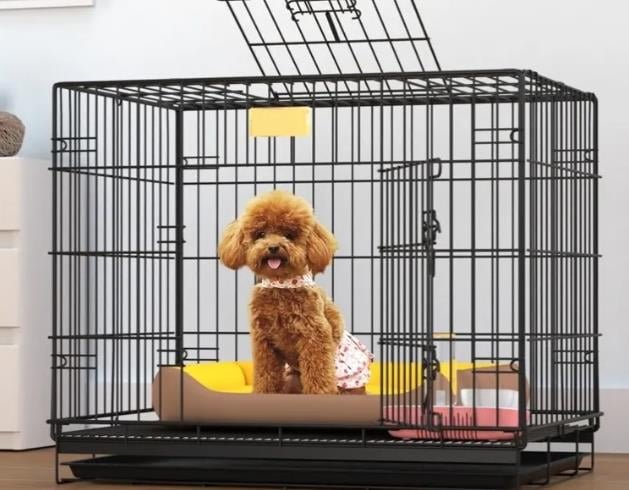
Essential Tips for Crate Training a Puppy
Introduction to Crate Training
Crate training a puppy can be a valuable method for both you and your pet. It provides your puppy with a safe and comfortable space while helping to mitigate behavioral issues. This guide will cover essential tips for successfully crate training your new furry friend.
Choosing the Right Crate
The first step in crate training is selecting the appropriate crate. Consider the size of your puppy and choose a crate that allows them to stand, turn around, and lie down comfortably. It’s important that the crate is not too large, as this might encourage your puppy to use one end as a bathroom area. A properly sized crate will help your puppy feel secure.
Introducing the Crate
Introduce the crate gradually to ensure your puppy feels comfortable. Start by placing the crate in a common area of your home and keep the door open. Encourage your puppy to explore the crate by placing treats, toys, and soft bedding inside. Allow your puppy to enter and exit the crate freely without forcing them.
Establishing a Routine
Consistency is key when crate training a puppy. Establish a routine by feeding your puppy their meals inside the crate and creating a schedule for crate time. Begin with short periods and gradually increase the duration as your puppy becomes more accustomed to the crate. Make sure to provide bathroom breaks and playtime outside the crate to keep your puppy happy and healthy.
Positive Reinforcement
Use positive reinforcement techniques to make crate training a positive experience. Praise your puppy and offer treats when they enter the crate willingly. Avoid using the crate as a form of punishment, as this can create negative associations. Patience and positive reinforcement will lead to a successful crate training experience.
American Dingo animal behavior Budget Tips canine behavior Canine Care Canine Health Dehydration dog age dog behavior Dog Breeds dog care Dog Care Tips dog exercise dog flea treatment Dog Food Dog Grooming dog health dog nutrition dog ownership Dog Sleep Tips Dog Training Dog Wound Care Family Pets First Aid Giardia Prevention Healthy Pets Hunting Dogs newborn puppy care Parasites in Dogs Pet Care Pet Care Tips Pet Health Pet Safety pet tips pet training Positive Reinforcement Potty Training prevent flea bites Puppy Care puppy health Puppy Training Rabies in Dogs Training Tips veterinary advice Veterinary Care
-
 How to Successfully Potty Train Your Dog in Singapore
2 views
How to Successfully Potty Train Your Dog in Singapore
2 views -
 Finding Love with Fellow Dog Lovers: Tips and Tricks
1 view
Finding Love with Fellow Dog Lovers: Tips and Tricks
1 view -
 The Cost of Mini Goldendoodles: What to Expect
1 view
The Cost of Mini Goldendoodles: What to Expect
1 view -
 How to Identify an Akbash Dog
1 view
How to Identify an Akbash Dog
1 view -
 How to Identify a Catahoula Leopard Dog
1 view
How to Identify a Catahoula Leopard Dog
1 view -
 A few interesting instincts of dogs
1 view
A few interesting instincts of dogs
1 view -
 Understanding the Costs of Training a Dog to Behave
1 view
Understanding the Costs of Training a Dog to Behave
1 view -
 The Ideal Age to Start Potty Training Your Dog
1 view
The Ideal Age to Start Potty Training Your Dog
1 view -
 What is the #1 most expensive dog?
1 view
What is the #1 most expensive dog?
1 view -
 The intention of exposing a dog’s belly
1 view
The intention of exposing a dog’s belly
1 view










Leave a Reply
You must be logged in to post a comment.